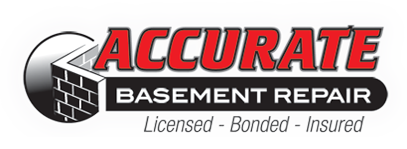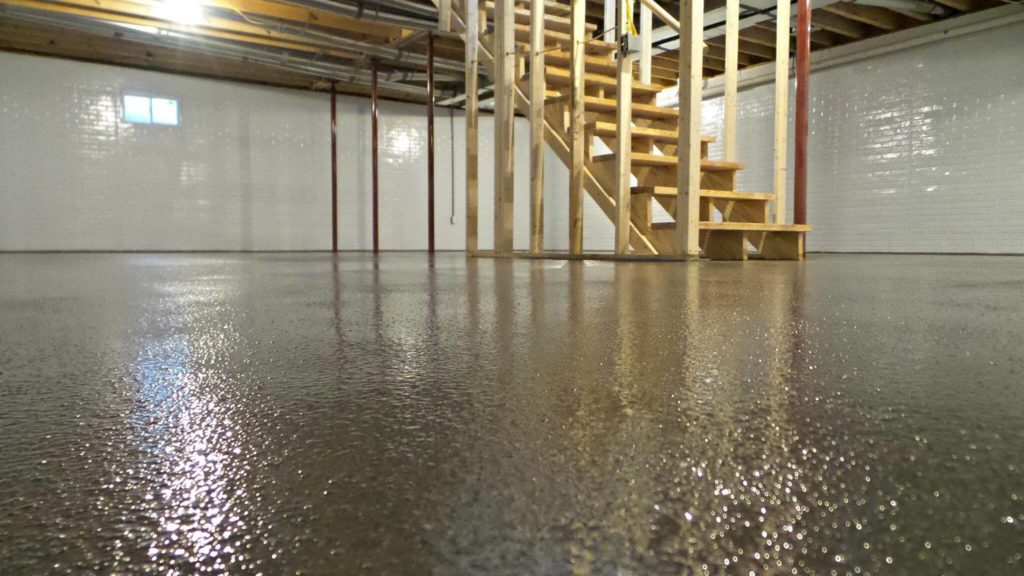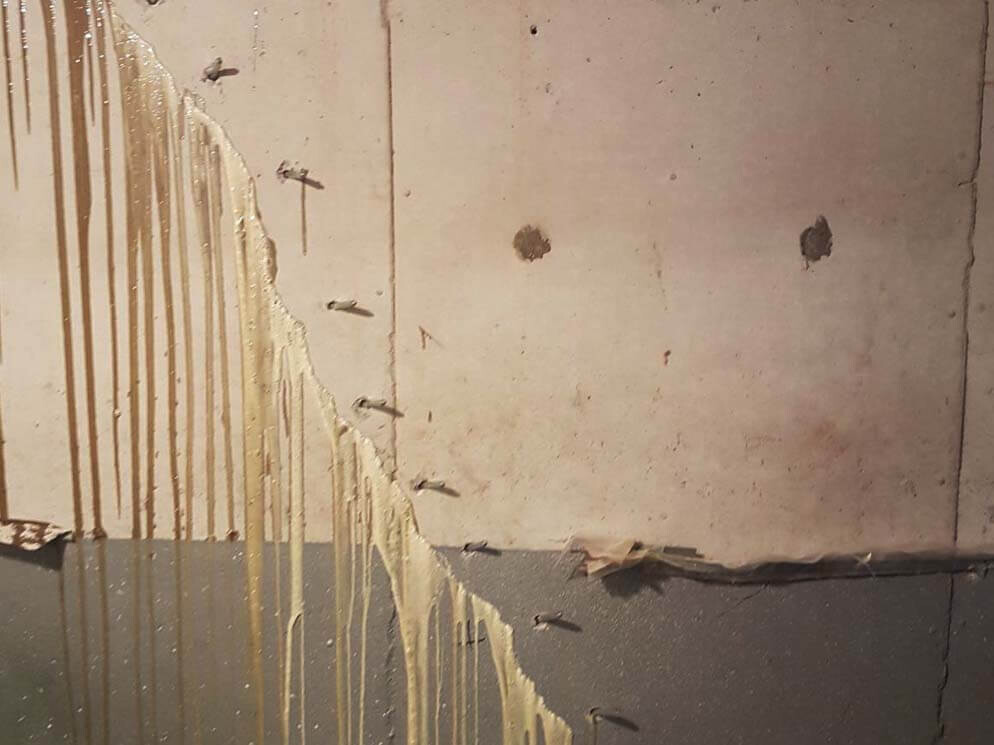Effective Tips for Basement Waterproofing
Basement waterproofing is a crucial aspect of maintaining a safe and habitable home. A damp or leaky basement can lead to a host of problems, including mold growth, structural damage, and compromised indoor air quality. In this comprehensive guide, we will delve into the essential tips for effective basement waterproofing, ensuring your home remains dry and secure. Whether you’re a homeowner looking to protect your investment or a business owner seeking to enhance your property’s longevity, these tips will provide you with the knowledge you need.
1. The Importance of Basement Waterproofing
Basement waterproofing is not just a matter of convenience; it’s a critical aspect of home maintenance that directly impacts the safety, structural integrity, and
Preserving Structural Integrity:
At the foundation of your home lies its structural integrity. The foundation supports the weight of the entire structure and plays a pivotal role in ensuring that your home stands firm against external forces. A damp or water-damaged basement can weaken the foundation over time, leading to shifting, settling, and even structural failure. Basement waterproofing acts as a formidable barrier against water infiltration, preventing moisture from compromising the foundation’s stability.
Preventing Mold and Mildew:
Basements are notorious for being dark, cool, and often damp spaces, which creates an ideal environment for mold and mildew to flourish. Mold growth not only poses health risks to you and your family but can also spread throughout your home, affecting indoor air quality and causing respiratory issues. Basement waterproofing effectively cuts off the moisture supply that molds and mildew need to thrive, creating an inhospitable environment for their growth.
Enhancing Indoor Air Quality:
The air quality within dry basement of your home has a direct impact on your overall well-being. A damp basement can lead to the release of musty odors and airborne contaminants, which can trigger allergies, asthma, and other respiratory problems. By keeping your basement dry through waterproofing, you ensure that the air circulating in your home remains clean, fresh, and free from harmful pollutants.
Preserving Personal Belongings:
Many homeowners use their basements for storage, housing valuable possessions such as furniture, electronics, documents, and family heirlooms. When a basement is prone to leaks or flooding, these cherished items are at risk of irreversible damage. Basement wall waterproofing provides a safeguard against potential water damage, allowing you to utilize your basement space for storage without worry.
Protecting Your Investment:
A home is one of the most significant investments you’ll make in your lifetime. By investing in basement waterproofing, you’re actively protecting this investment for the long term. A structurally sound and well-maintained basement adds value to your property, making it more attractive to potential buyers should you decide to sell in the future.
Preventing Costly Repairs:
The financial implications of neglecting basement waterproofing can be substantial. Water damage to your foundation, walls, flooring, and personal belongings can result in costly repairs that far outweigh the initial investment in waterproofing measures. By taking proactive steps to prevent water infiltration, you’re avoiding potential financial burdens down the line.
Creating Livable Space:
For many homeowners, the basement represents untapped potential for additional living space. Whether you dream of a cozy family room, a home gym, a playroom for the kids, or even an income-generating rental unit, a dry and well-protected basement is the foundation upon which these dreams can be built. Waterproofing opens up the possibility of expanding your living area and maximizing the functionality of your home.
2. Common Causes of Basement Moisture
Basement moisture is a common issue that homeowners often face, and understanding the underlying causes is essential for effective basement waterproofing. Moisture infiltration can lead to a cascade of problems, from structural damage to health hazards. Let’s explore some of the most prevalent reasons behind basement moisture and how addressing these causes is crucial for maintaining a dry and healthy living space.
Inadequate Exterior Drainage:
Improper exterior drainage is a leading cause of basement moisture. When the ground around your home is not properly graded, water can pool near the foundation walls instead of being directed away. This creates hydrostatic pressure against the foundation, forcing water to seep through cracks and gaps in the concrete floor. Over time, this pressure can compromise the integrity of the foundation and lead to water infiltration.
Foundation Cracks and Wall Leaks:
As a house settles over time due to soil movement or other factors, cracks can develop in the foundation walls or floors. These cracks provide pathways for water to enter the basement. Additionally, leaks can occur through gaps around windows and doors, pipe penetrations, and utility openings. Identifying and sealing these openings is essential for preventing moisture infiltration.
Poorly Maintained Gutters and Downspouts:
Gutters and downspouts play a critical role in directing rainwater away from your home’s foundation. When gutters are clogged with debris or downspouts are not properly positioned, rainwater can overflow and pool around the foundation. This excess moisture can find its way into the basement, causing dampness and potential damage.
Hydrostatic Pressure:
Hydrostatic pressure occurs when groundwater builds up around the foundation and exerts pressure against the basement walls. This pressure can force water through even the tiniest cracks in the concrete foundation, leading to leaks and moisture issues. High water tables and poor drainage systems can contribute to hydrostatic pressure problems.
Condensation and Humidity:
Basements are naturally cooler than the rest of the house, and this temperature difference can lead to condensation when warm, humid air comes into contact with cooler surfaces in wet basement. Condensation forms on walls, pipes, and other basement surfaces, creating an environment conducive to mold growth and moisture-related problems.
Inadequate Ventilation:
Proper ventilation is essential for controlling humidity levels in the basement. Without adequate airflow, moisture can become trapped in the crawl space below, leading to dampness and mold growth. Proper ventilation systems, such as exhaust fans and dehumidifiers, can help mitigate humidity and improve air quality.
Faulty Waterproofing Systems:
In some cases, homes might have inadequate or outdated waterproofing systems. If the initial waterproofing measures were not properly installed or have deteriorated over time, they can become ineffective in preventing moisture infiltration. Regular maintenance and updates to waterproofing systems are crucial to ensuring their ongoing efficiency.
3. Exterior Waterproofing Solutions
When it comes to basement waterproofing, a comprehensive approach that addresses both the interior and exterior of your home is crucial for long-term effectiveness. Exterior waterproofing solutions focus on preventing moisture from reaching your basement walls and foundation in the first place. By creating a barrier against water intrusion, these solutions play a vital role in maintaining a dry and secure basement. Let’s explore some key exterior waterproofing products and techniques that can help safeguard your home.
Proper Grading:
The foundation of effective exterior waterproofing starts with proper grading. Grading involves shaping the landscape around your home to ensure that water naturally flows away from the foundation. If the ground slopes towards the foundation, rainwater, and melting snow can pool near the basement walls, leading to water infiltration. By regrading the landscape to slope away from the foundation, you can redirect water away from your home and reduce the risk of moisture problems.
Install Exterior Drainage Systems:
Exterior drainage systems are essential for managing groundwater and surface water around your home’s foundation. A French drain, for instance, is a perforated pipe installed around the perimeter of the foundation. It collects and directs water away from the foundation, preventing hydrostatic pressure buildup that can force water through cracks. Footing drains are another option, installed square foot or at the base of the foundation walls to intercept and divert water before it reaches the basement.
Seal Cracks and Gaps:
Inspecting your foundation for cracks and gaps is a critical step in exterior and waterproofing your basement. Even minor openings can provide entry points for water. High-quality sealants, such as epoxy or polyurethane, can effectively seal these cracks and gaps, creating a watertight barrier. It’s important to address these issues promptly to prevent water infiltration and potential structural damage.
Use Waterproof Membranes:
Waterproof membranes are protective barriers applied to the exterior walls of your foundation. These membranes are designed to prevent water from penetrating the foundation and reaching the basement. They are particularly effective in areas prone to heavy rainfall or when other waterproofing methods may not be sufficient. Waterproof membranes create an additional layer of defense against moisture infiltration, enhancing the overall waterproofing system waterproof your basement.
4. Interior Waterproofing Techniques
Interior waterproofing techniques complement exterior solutions by managing water that has already infiltrated the basement or preventing further moisture intrusion from the inside. While exterior methods focus on keeping water away, interior techniques address water that may find its way in despite best efforts. These methods are particularly effective for managing minor leaks, condensation, and high humidity levels. Let’s delve into some essential interior waterproofing techniques.
Install Interior Drainage Systems:
Interior drainage systems, such as interior French drains and sump pump systems, are designed to collect and redirect water that has entered the basement. An interior French drain consists of a perforated pipe installed beneath the basement floor, along with a layer of gravel. This drainage system collects water and directs it towards a sump pump, which then pumps the water out and away from the foundation. Interior drainage systems are especially useful for managing groundwater or water that seeps through cracks in the foundation.
Seal Interior Cracks:
Even with effective exterior waterproofing measures in place, some cracks may still allow water to penetrate the basement. Interior crack sealing involves injecting specialized sealants into cracks and gaps in the basement walls or floor. These sealants expand and harden, creating a watertight barrier that prevents further water infiltration. Sealing interior cracks is a proactive step that can help mitigate the impact of exterior moisture sources.
Apply Waterproof Paints and Coatings:
Waterproof paints and coatings create a moisture-resistant barrier on interior basement walls. These products are designed to repel water and prevent it from being absorbed into the walls. Waterproof paints and coatings can also improve the overall aesthetics of the already waterproof basement walls by providing a clean, finished look. While they may not be a standalone solution for severe water issues, they can be a valuable addition to your interior waterproofing strategy.
5. Professional Basement Waterproofing Services
While some homeowners may opt for DIY waterproofing, seeking professional assistance is often the best way to ensure comprehensive and lasting results. Professional waterproofing companies possess the expertise, specialized equipment professional installation,, and materials necessary to address even the most challenging waterproofing issues.
6. DIY vs. Professional Waterproofing
Deciding between a DIY approach to waterproof coating and hiring professionals depends on the complexity of the waterproofing task and your level of expertise. While minor cracks and leaks may be manageable as DIY projects, more extensive water issues require the skills of experienced professionals to prevent further damage.
A Dry Foundation for a Secure Future
In the realm of homeownership, few endeavors are as vital as basement waterproofing. With the potential to impact everything from structural integrity to indoor air
Remember, effective basement waterproofing is not a one-time task; it’s an ongoing commitment. Regular maintenance, vigilant monitoring for signs of moisture, and timely repairs are essential to preserving the effectiveness of your waterproofing efforts. Whether you choose to implement exterior drainage systems, seal cracks, or apply waterproof paints and coatings, each step contributes to a holistic approach that pays dividends for years to come.
As you embark on your basement waterproofing journey, keep in mind that professional guidance and expertise are invaluable assets. Consulting with experienced professionals can help you navigate the intricacies of your basement waterproofing system, ensuring that your efforts yield lasting results.
In conclusion, a dry foundation is the bedrock upon which a secure and prosperous future is built. By embracing the insights and techniques outlined in this guide to basement dry-out, you’re taking proactive steps to protect your investment, your family’s health, and your overall quality of life. Basement waterproofing is not just a maintenance task; it’s a commitment to creating a safe, comfortable, and enduring home for generations to come.
Contact the Professionals at Accurate Basement Repair Today! 414-744-6900






